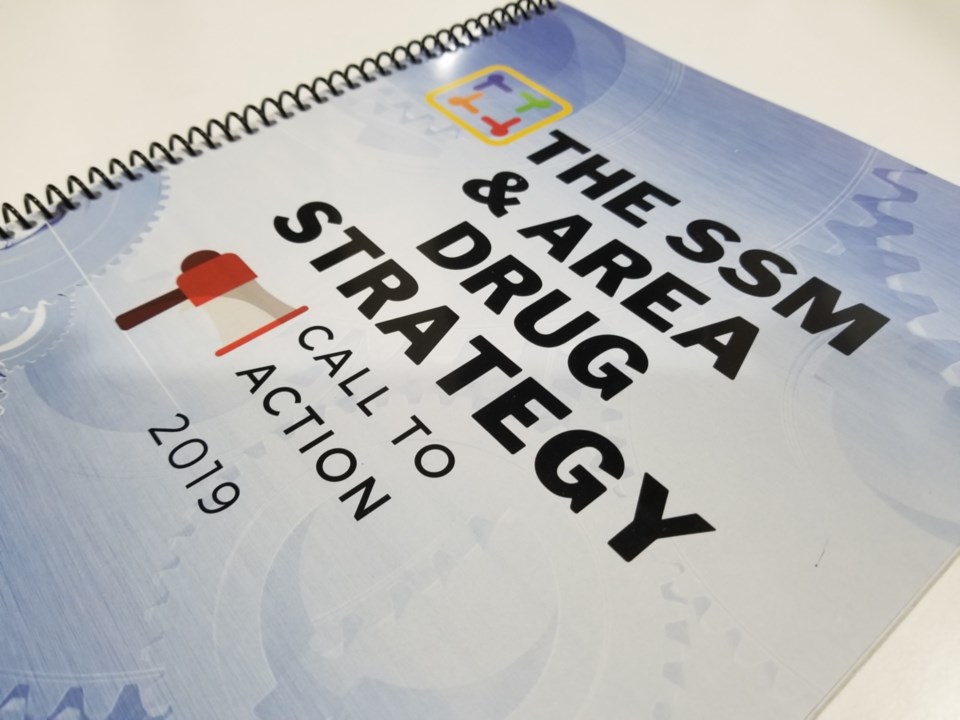The SSM & Area Drug Strategy (SSMADS) unveiled its report on substance use to the public at Algoma Public Health Wednesday.
That report, entitled Call To Action, used research conducted between June 2018 and December 2018 in order to provide an evidence base for a community action plan that’s intended to address the risks associated with substance use in Sault Ste. Marie and surrounding areas.
“It’s the community’s drug strategy,” SSMADS coordinator Charles Shamess told reporters following Wednesday’s meeting. “It belongs to the Sault. It doesn’t even belong to these agencies, it belongs to the Sault.”
“Every citizen should be aware of the harms associated with substance use, and should want to do something about it.”
Through its research - which consisted of interviews with service providers, individuals and other drug strategies across the province - the local drug strategy committee is using its report to make 62 recommendations, which were subsequently boiled down to 11 priorities going forward:
- Identify and implement innovative evidence-based programs to increase treatment capacity and reduce gaps in services.
- Continue to advocate for the provincial government’s approval of a Level III Withdrawal Management Facility in Sault Ste. Marie and area.
- Reduce, prevent, and delay substance use and the harms related to substance use among youth and adults in the community.
- Improve the service user experience and outcome by implementing a person-centred language and approach in new and existing programs and initiatives.
- Improve, calibrate, and prioritize contingencies to address accessibility concerns: locations, hours of operation, and proximity of supportive services.
- Develop aligned working relationships to reduce wait times, enhance collaboration and integration between service organizations.
- Reduce crime, the supply of illicit substances and community harms associated with substance use to build a strong, safe, and resilient Sault Ste. Marie.
- Increase treatment capacity and expand access to the community-based mental health and substance use services for children and youth (age 14-25), recognizing the effectiveness of early interventions is dependent on efficient workforce planning.
- Maximize public awareness and improve community readiness supporting the vital need for prevention education, safety, treatment, harm reduction services and the options available.
- Establish a resource model, partner organizations, and process for collaborative funding to support the continued work of the drug strategy.
- Expand the availability of integrated community-based mental health and substance use services for people with complex health needs.
When asked for a time frame for the implementation of all 62 recommendations contained within Call To Action, Shamess told reporters that work will be carried out over the "next number of years."
“There are six or seven projects that [are] in the early developmental phase, including anti-stigma discrimination campaigns, including access - timely access - to treatment, including a more robust and evidence-based education for youth in terms of their resiliency and their strengths.”
During a brief question and answer period, a community member told the audience - which consisted of several community stakeholders and committee members - that people dealing with substance use issues can be stigmatized when seeking help at the local hospital.
“This is still a highly stigmatized illness, and we must, in order to provide appropriate services, we must break down those barriers,” Shamess told reporters. “We heard the gentleman speak about it in the meeting today that there’s stigma discrimination that’s been experienced at the hospital. We’ve heard that before.”
“This is not to blame hospital members, because they’re just people like everybody else, and they [have] busy jobs and they get very tired, but we will work with them to reduce the stigma discrimination from service providers.”
When asked which of the 11 priorities outlined in Call To Action is most pressing, Shamess told reporters that a new withdrawal management site would address some gaps that exist within the current system.
“Level III withdrawal management is very pressing because we have inadequate treatment services, residential treatment services and managed medical services - so that’s definitely a priority,” he said.
The Call To Action report will eventually be made available in its entirety on the websites of participating agencies within SSMADS, while the drug strategy committee works on getting its own website up and running.
In the meantime, some elements of that research can be found by clicking here.
The SSM & Area Drug Strategy Committee consists of representatives from 27 local agencies, including Algoma Public Health, Sault Area Hospital, Algoma Family Services and John Howard Society.
